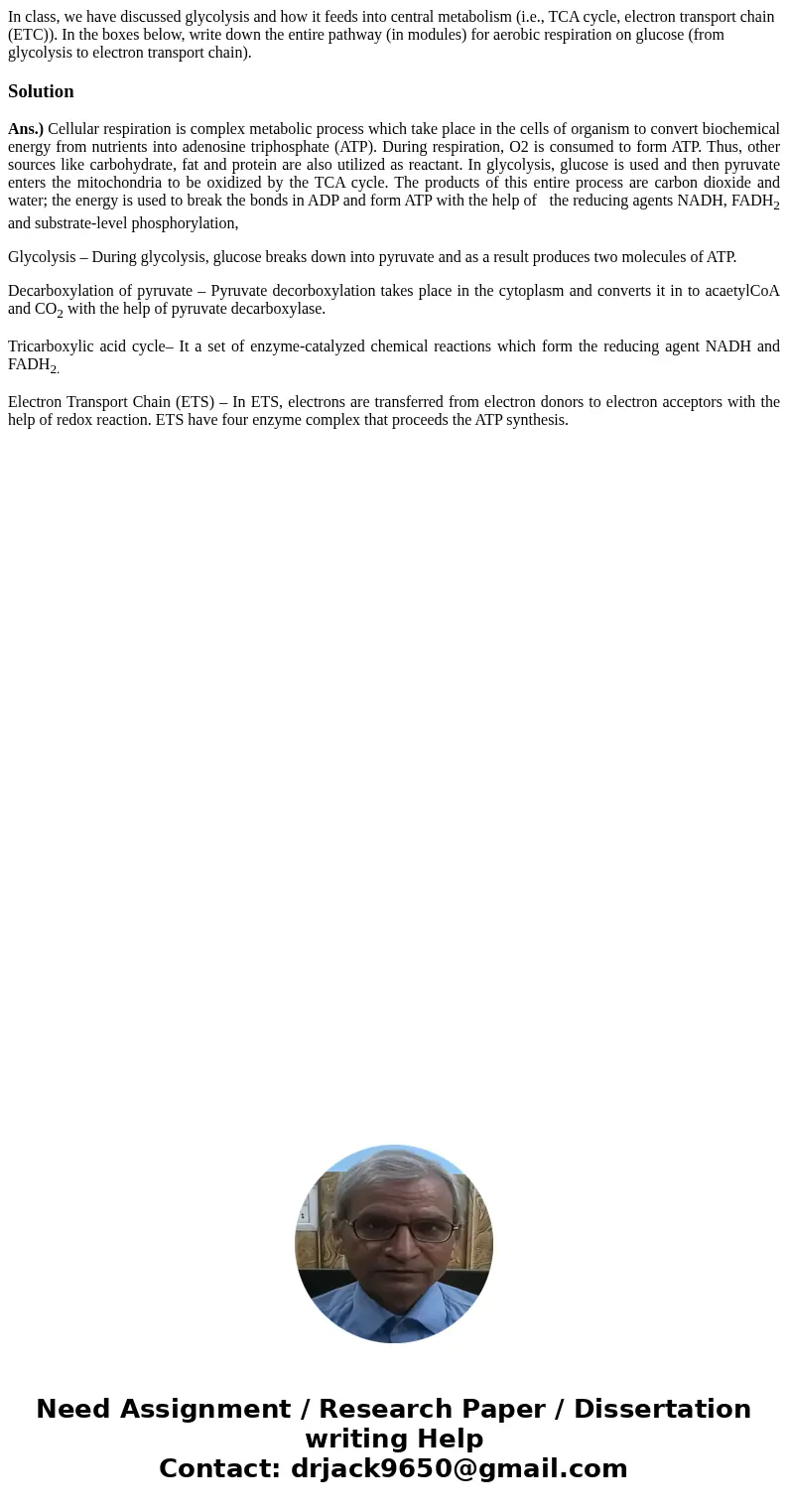In class we have discussed glycolysis and how it feeds into
Solution
Ans.) Cellular respiration is complex metabolic process which take place in the cells of organism to convert biochemical energy from nutrients into adenosine triphosphate (ATP). During respiration, O2 is consumed to form ATP. Thus, other sources like carbohydrate, fat and protein are also utilized as reactant. In glycolysis, glucose is used and then pyruvate enters the mitochondria to be oxidized by the TCA cycle. The products of this entire process are carbon dioxide and water; the energy is used to break the bonds in ADP and form ATP with the help of the reducing agents NADH, FADH2 and substrate-level phosphorylation,
Glycolysis – During glycolysis, glucose breaks down into pyruvate and as a result produces two molecules of ATP.
Decarboxylation of pyruvate – Pyruvate decorboxylation takes place in the cytoplasm and converts it in to acaetylCoA and CO2 with the help of pyruvate decarboxylase.
Tricarboxylic acid cycle– It a set of enzyme-catalyzed chemical reactions which form the reducing agent NADH and FADH2.
Electron Transport Chain (ETS) – In ETS, electrons are transferred from electron donors to electron acceptors with the help of redox reaction. ETS have four enzyme complex that proceeds the ATP synthesis.

 Homework Sourse
Homework Sourse